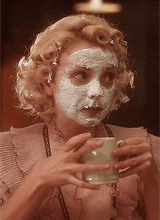Five Steps for Clear Skin that Work

Acne is a pain in the ass. It affects your self-esteem. It affects your bank account. Acne hurts. There are endless product lines on the market that may or may not change your skin. It can be an overwhelming quest for improvement. Here’s the process I use in the treatment room to sleuth out what is and isn’t working and get fast results.
1. Treat the Skin Type. Acne affects individuals of every age and skin type. Your skin type is a description of the oil levels in your skin, normally described as Normal, Oily, Dry, or Combination (Normal/Oily, Normal/Dry). Normal skin isn’t very normal at all. Most people have some version of combination skin, Your skin type may evolve slightly over time, usually less oil is produced by the body as we age, but it’s rare to switch to a completely new skin type. Skincare used should balance your skin type first, so products for oily skin will absorb oil and products for dry skin will contain beneficial oils. If you are using the right products, your skin should mimic the look of “normal” skin, not too shiny or dry, with a satin finish. Try matte sunscreens to absorb oil and keep makeup fresh longer.

2. Nutrition. Eating whole foods, and meats that are hormone and antibiotic-free will reduce the magnitude of breakouts. One of my sensitive skin clients who ate a typical American diet, went to Honduras for 3 weeks, where there was no fast food or processed meats, and came back with 70% less acne. My daughter became a vegetarian and had the same result, eventually, I began recommending diets with clean meat, and miraculously, it improved the skin of all of my clients with acne.
Nutritional deficiency can also cause acne. If your skin clears up dramatically after a week at the beach, you may have a vitamin D deficiency. A vitamin D3 supplement can produce a similar result. This small act has reduced acne in my clients by as much as 30%.
Topical vitamin C is a powerful antioxidant that should be included in every acne regimen. It prevents scarring, heals blemishes quickly, and reduces inflammation. A topical solution with between 10 and 20% vitamin C gives the skin a healthy peachy glow, reducing blotchiness within 2 weeks of use.
3- Sensitivity Acne caused by food allergies or sensitivities will show up randomly, and have a connect-the-dots appearance, with small red bumps that are evenly spaced out. Some food allergies have very few symptoms, often the only symptoms will be random breakouts and dark circles or puffiness around the eyes. Allergists recommend that you have your food allergies tested every 3 years because a new sensitivity can occur at any time. I find that individuals are intuitive, and usually have a hunch about foods their bodies may be sensitive to. It’s usually a food that is eaten on a daily or weekly basis. Eliminate that food for 2-3 weeks and your skin will improve.
Sensitivity to the sun can cause a similar polka-dot appearance, but a sun allergy such as Polymorphous Light Eruption will occur within hours of sun exposure and subside in the absence of sun. Additional sensitivities can be from acne product ingredients, detergents, and sunscreen chemicals.

4. Culprits. Ingredients that won’t clog pores are termed non-comedogenic. You can usually google an ingredient to see if it is comedogenic (causes blemishes). Google the Comedogenic Scale for Oils, and you will find that oils that have a rating of 0 will never clog pores. Oils are integral to healthy skin, and a complete lack of them leads to fissures and cracks in the skin that can trigger acne. Some non-comedogenic oils are Jojoba, Sunflower oil, and hemp, and there are many more. Don’t be afraid to use a face oil to balance and protect sensitive skin. In the treatment room, I create custom oil blends for my clients that have essential oils to balance their skin. One of my favorite oils is hemp oil which is balancing and anti-inflammatory, and you only need a few drops under your moisturizer or mixed with moisturizer to soothe sensitivity and improve moisture levels. Make sure the oils in your skincare are non-comedogenic.
Another pore-clogging ingredient is artificial color added to makeup. Teens that switched from typical makeup brands like MAC to mineral companies like Glo Minerals, Bare Minerals, and Jane Iredale saw a 60% reduction in acne. My daughter was one, she had stage 2 acne with whiteheads and blackheads, and when she switched to mineral makeup her acne drastically improved. It was more beneficial than all of the professional treatments I performed on her. If you must have non-mineral makeup, at least use a primer, base, and concealer that have mineral pigments instead of artificial. This will protect your skin.
Lastly, there are a few habits that contribute to acne. Teens that play sports, and adults who frequent the gym tend to have increased blackheads, Wearing an antibacterial product on the skin with 2% Salicylic Acid during sports and working out will kill bacteria and discourage blackheads. In my classes, I encounter gym-goers with backs broken out from the friction of their bra straps, horseback-riders and football players with helmet acne, breakouts from eyeglasses and sunglasses rubbing the nose, frequent phone users with acne on their cheeks, and both old and young adults with more blemishes on the side of the face they sleep on most frequently. It is beneficial to keep anti-bacterial face wipes in the gym bag, the locker, the desk at work, and wipe glasses and phones down with an alcohol wipe frequently.
5. Less is more. Less really is more. Try the above tips, and then if you still have acne, try acne treatments from gentle to potent in that order. Acne ingredients that are gentle include essential oils such as tea tree, lemongrass, and lavender. Three drops of each in an ounce of Jojoba oil makes a great acne-fighting blend. A few drops on clean skin before bed or workouts etc is all that is needed for most, especially if the above concerns are being managed.
A clay masque can work wonders to dry and clear acne when used 3 times a week and maybe left on the skin overnight as a spot treatment to bring blemishes to a head. Salicylic acid will get down into the pores to treat both blackheads and whiteheads and is safe for sensitive skin. Benzoyl peroxide is great for whiteheads and inflamed acne, as is a .25% retinol cream. Dilute strong acne creams with a gentle moisturizer to reduce dryness and irritation. Gradually increase the amount of acne product in the mixture as your skin becomes accustomed to it.
How Often Should I get a Treatment? I always encourage individuals who want dramatic results to do their first few professional acne treatments at the spa spaced close together, about 2-3 weeks apart. This allows the therapist to tweak the at-home regimen for better results and ensures that skin treatments such as microdermabrasion and peels impact the skin quickly.

Helping an individual to balance their skin and move past acne is one of the most exciting and meaningful experiences that I have in my career as a holistic skincare therapist. If this resonates with you, please reach out to me at (615) 669-0386 or at stephaniesmithskincare@gmail.com for a consultation.